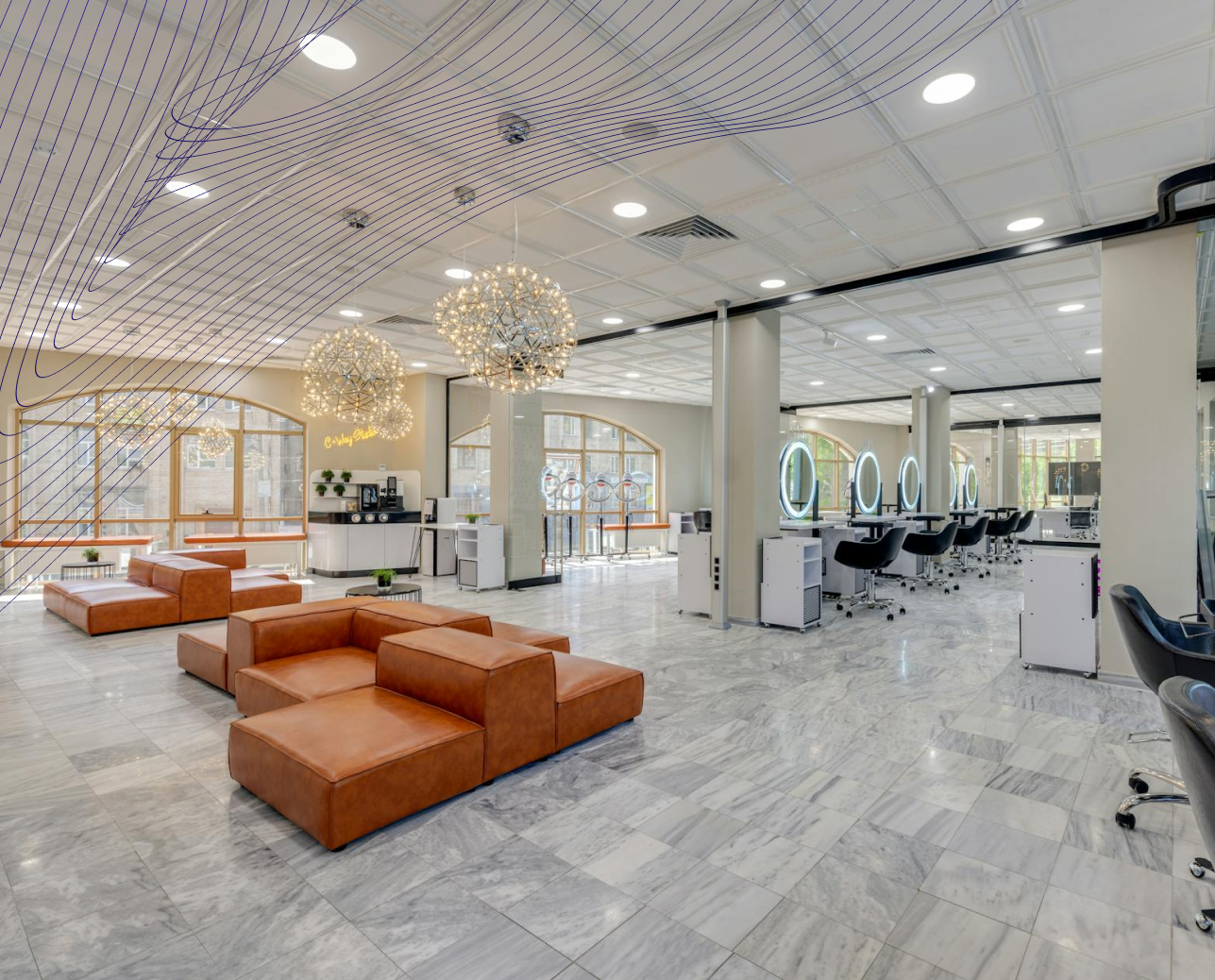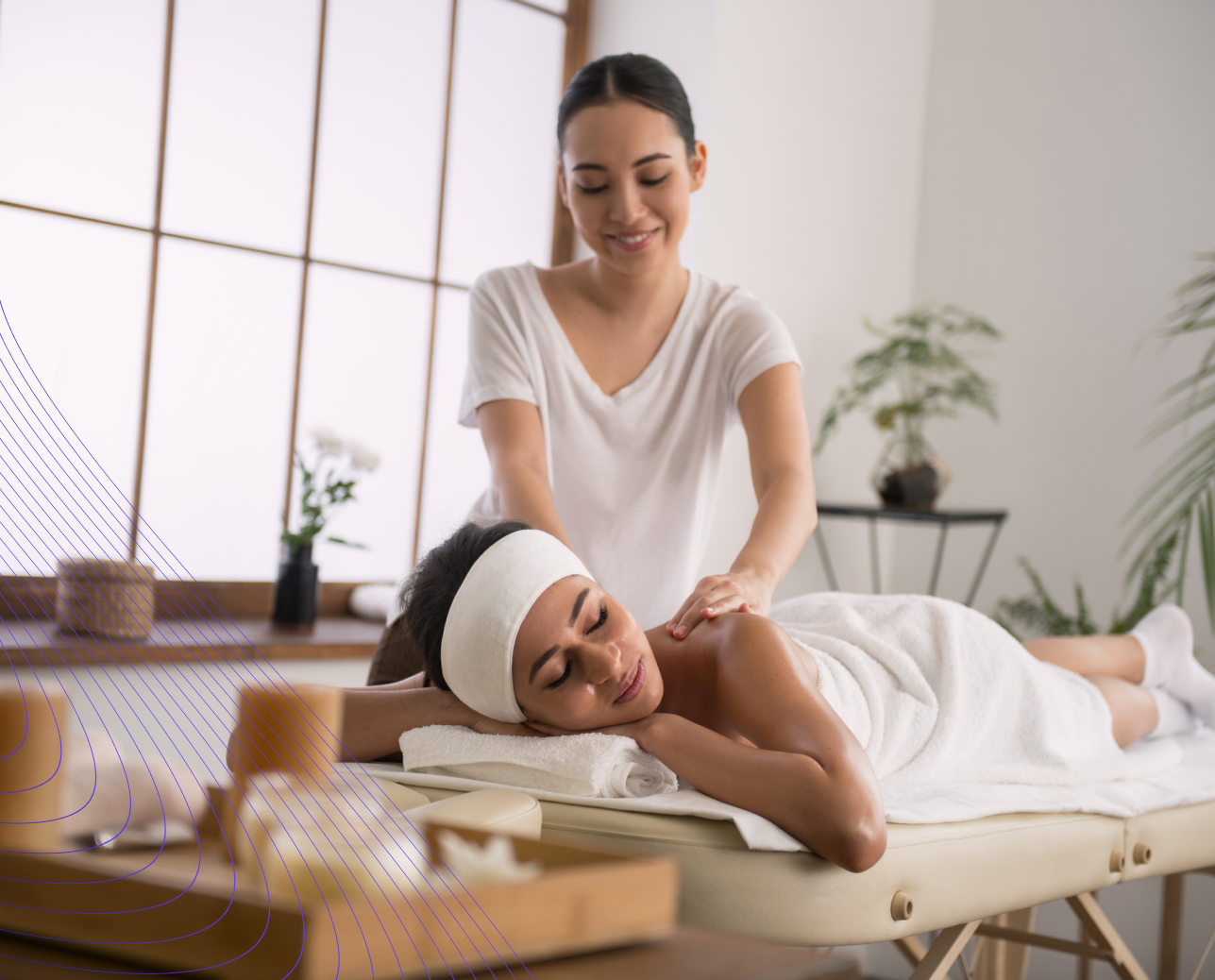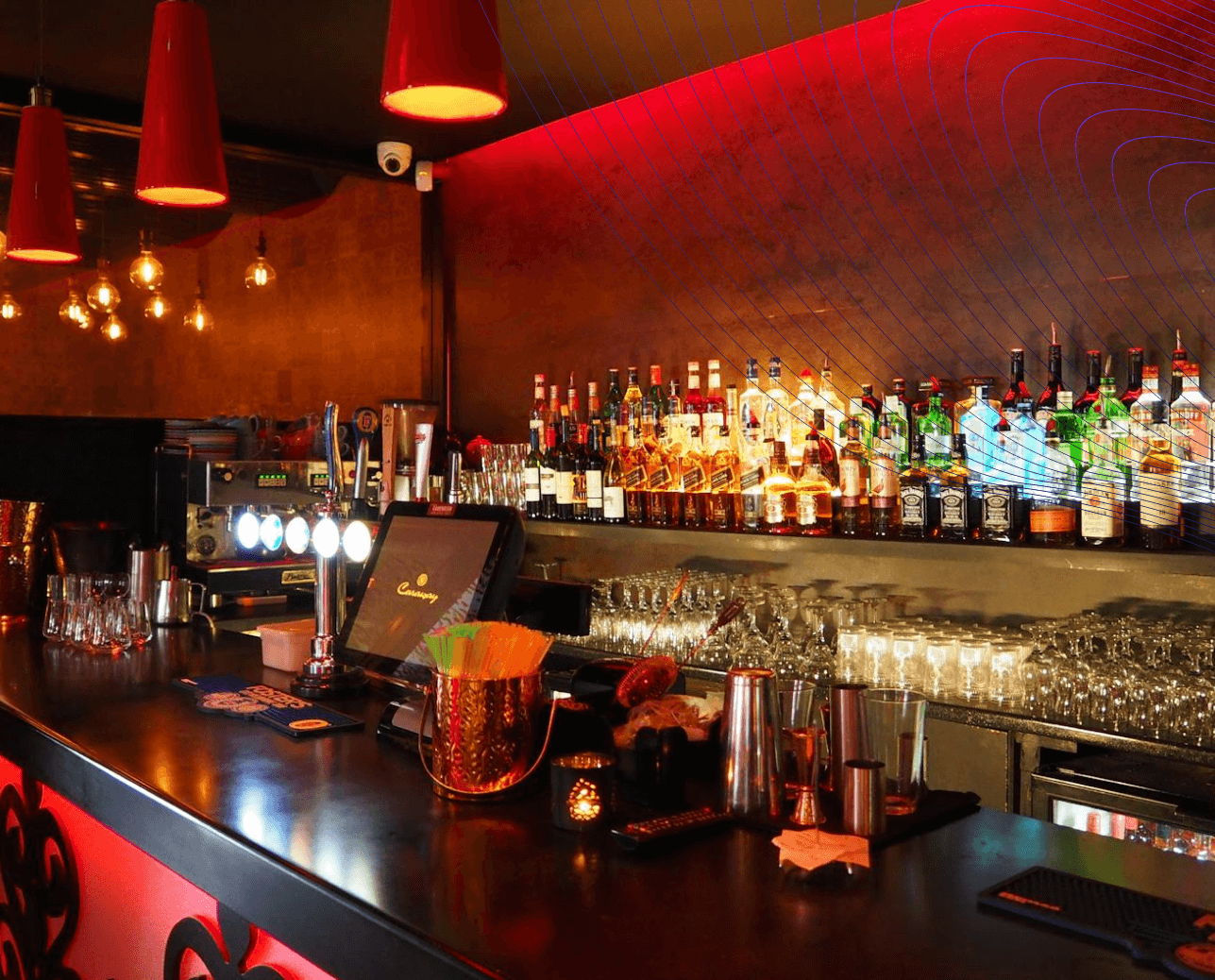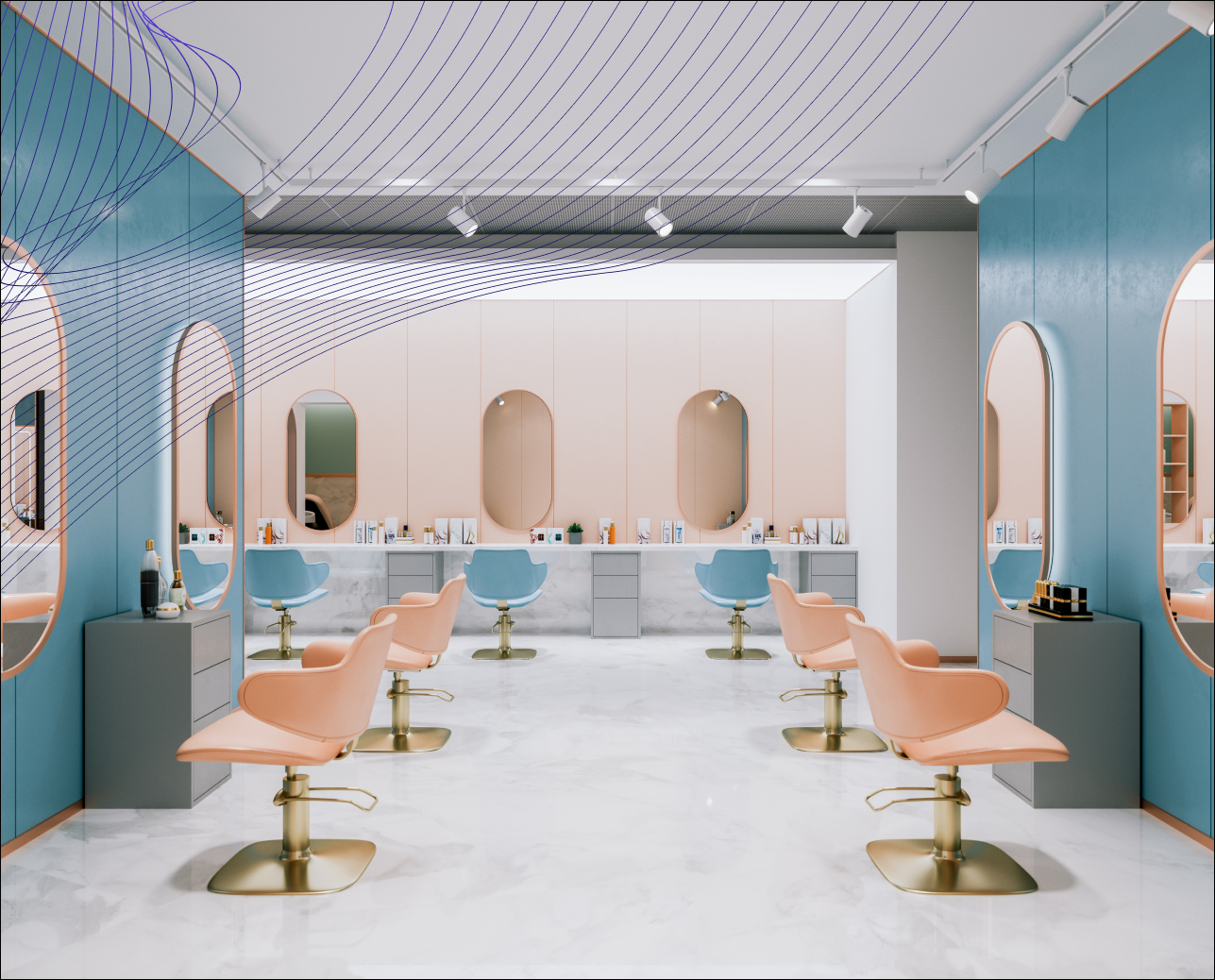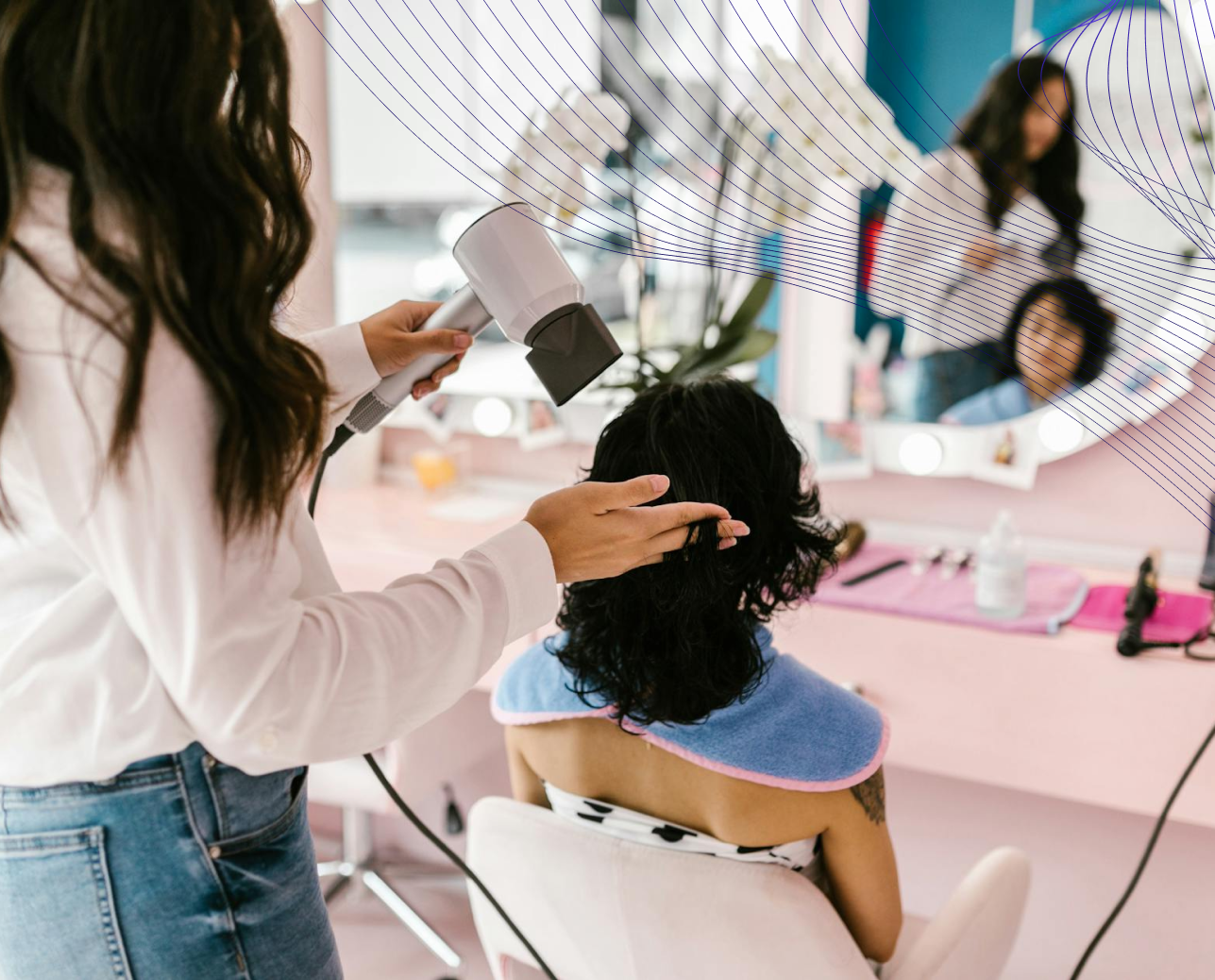How to Open a Beauty Salon and How Much Does it Cost?
Opening a beauty salon is an exciting venture that requires careful planning, research, and a clear understanding of the costs involved. Proper planning and budgeting are crucial for the long-term success and sustainability of your beauty salon. Understanding the steps involved and the costs associated with a beauty salon opening can significantly increase the chances of success.
This guide will provide a comprehensive overview of how to open a beauty salon business: from initial research and planning to ongoing operational costs, ensuring prospective salon owners are well-prepared to succeed in this competitive industry.

Steps on How to Start a Beauty Salon Business
Starting a beauty salon business involves several crucial steps, each requiring careful consideration and planning. By following these steps, you can ensure a smooth launch and sustainable growth for your salon business.

Step One: Market Research and Business Plan
Conducting thorough market research is the foundation of opening your own beauty salon. This step involves understanding your target audience, identifying your competitors, and analyzing market trends.
Start by defining your target market: who are your ideal clients? Are they young professionals, middle-aged individuals, or retirees? What services are they looking for? What are their spending habits? Understanding these details will help tailor your services to meet their needs.
Next, identify your competitors. Visit other salons in your area and analyze their services, pricing, and customer experience. What are their strengths and weaknesses? What can you offer that they don’t? Use this information to differentiate your salon and create a unique value proposition. Conduct surveys or focus groups to gather direct feedback from potential customers, helping to refine your service offerings and business approach.
A comprehensive business plan should outline your salon's vision, goals, and strategies. It should include the following sections:
-
Executive Summary: A brief overview of your business concept, target market, and financial projections.
-
Company Description: Detailed information about your salon, including its mission, vision, and values.
-
Market Analysis: Insights from your market research, including target market demographics, competitor analysis, and market trends.
-
Organization and Management: An outline of your salon’s organizational structure, including key management roles and responsibilities.
-
Services Offered: A detailed description of the services you will offer, along with pricing.
-
Marketing Strategy: Your plan for attracting and retaining clients, including branding, advertising, and promotional activities.
-
Financial Plan: Detailed financial projections, including startup costs, operating expenses, revenue forecasts, and break-even analysis.
A solid business plan not only guides your business strategy but also helps in securing financing from investors or lenders. This detailed roadmap will be instrumental in steering your business towards success and sustainability.

Step Two: Choosing the Right Location
Selecting the right location is the second step for opening up a beauty salon. Location is crucial for attracting clients and ensuring long-term success. Several factors should be considered when choosing a location:
-
Foot Traffic: High visibility and foot traffic can significantly increase walk-in customers. Look for locations near busy streets, shopping centers, or popular neighborhoods.
-
Accessibility: Ensure the location is easily accessible by public transportation and has ample parking. Consider the convenience for both clients and staff.
-
Proximity to Target Market: Position your salon near your target demographic to maximize convenience and appeal. For example, if your target market is young professionals, consider locations near office complexes or trendy neighborhoods.
Evaluate potential locations by visiting the area, observing traffic patterns, and researching local demographics. Consider the cost of rent and utilities, as well as the potential for future growth and expansion. An ideal location balances affordability with the potential for high client traffic, ensuring sustainability and profitability.

Step Three: Legal Requirements and Permits
-
Business License: Apply for a license to open a beauty salon from your local government to legally operate your salon. The requirements and costs vary by location, so check with local authorities.
-
Cosmetology License: Ensure all staff members, including yourself, have the required cosmetology licenses to perform beauty services. Licensing requirements vary by state, so consult your state’s cosmetology board.
-
Health Permits: Obtain health permits from your local health department, which may involve passing health and safety inspections. This ensures your salon meets sanitation standards and is safe for clients.
- Zoning Laws: Ensure your salon location complies with local zoning regulations. Verify that the property is zoned for commercial use and specifically for a beauty salon.
Health and safety regulations must be strictly adhered to, including proper sanitation practices, sterilization of equipment, and maintenance of a clean and safe environment. Regular inspections may be conducted by health authorities to ensure compliance. Staying informed about regulatory changes and maintaining proper documentation can help avoid fines and operational disruptions.

Step Four: Salon Design and Setup
Creating an inviting and functional space will ensure a new beauty salon opening. The design and setup of your salon can significantly impact the client experience and overall efficiency. Key steps include:
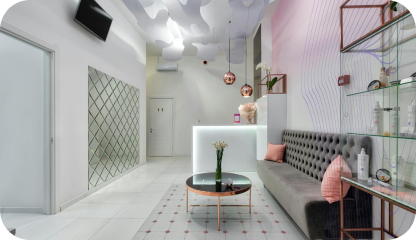
Interior Design
Choose a design theme that reflects your brand and creates a comfortable environment for clients. Consider factors such as color schemes, lighting, and décor. The design should be aesthetically pleasing and create a relaxing atmosphere. An appealing interior can enhance the client experience and encourage repeat visits.
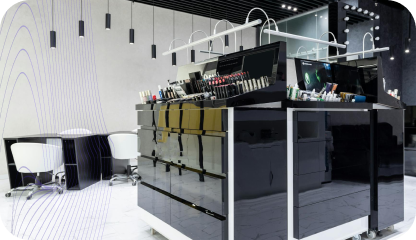
Layout Planning
Optimize the salon layout for efficiency, ensuring ample space for workstations, reception, and waiting areas. The layout should facilitate smooth workflow and minimize congestion. Consider the placement of mirrors, styling chairs, shampoo stations, and storage areas. Efficient space utilization can improve service delivery and staff productivity.
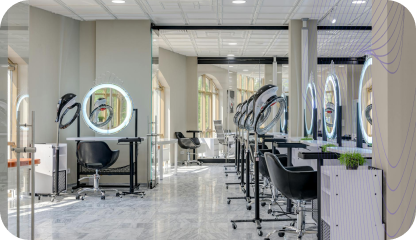
Equipment and Furniture Selection
Invest in high-quality equipment and furniture, such as styling chairs, mirrors, and hairdryers. Ensure the equipment is durable, functional, and comfortable for both clients and staff. Consider ergonomic designs to prevent strain and injury for staff members. Quality equipment not only improves service quality but also enhances the overall client experience.
In addition to the main salon area, consider creating private treatment rooms for services like facials and massages. A well-designed salon can enhance the client experience and improve workflow for staff, leading to higher client satisfaction and increased revenue.

Step Five: Hiring Staff
Recruiting skilled professionals before opening a beauty salon business is essential for delivering high-quality services and creating a positive reputation. Key considerations include:

Job Descriptions
Clearly define roles and responsibilities for positions such as hairstylists, aestheticians, and receptionists. Outline the skills, qualifications, and experience required for each role. Clear job descriptions help attract suitable candidates and set expectations.

Recruitment Process
Advertise job openings through various channels, including job boards, social media, and industry networks. Conduct thorough interviews and check references to find the best candidates. Consider practical tests to assess technical skills. A rigorous recruitment process ensures you hire skilled and reliable staff.

Training and Management
Provide ongoing training to ensure staff are up-to-date with industry trends and techniques. Training should cover both technical skills and customer service. Foster a positive work environment through effective management practices, including regular feedback, performance reviews, and team-building activities. Continuous professional development can enhance service quality and employee satisfaction.
Offering competitive salaries, benefits, and opportunities for career advancement can help attract and retain top talent. Happy and motivated staff are more likely to deliver excellent service, contributing to client satisfaction and loyalty.

Step Six: Marketing and Promotion
Effective marketing is crucial for a beauty salon start-up because exactly this can become the key channel for attracting and retaining clients. A well-executed marketing strategy can help build brand awareness, generate leads, and drive sales. Key strategies include:

Brand Creation
Develop a strong brand identity, including a logo, color scheme, and tagline. Your brand should reflect your salon’s unique value proposition and appeal to your target market. A strong brand differentiates your salon from competitors and creates a lasting impression.

Social Media

Local Advertising
Implement traditional advertising methods such as flyers, local magazines, and community events. Consider partnering with local businesses to cross-promote services. Local advertising helps increase visibility within the community and attract local clients.

Online Presence
Offer incentives such as discounts, loyalty programs, and referral bonuses to encourage repeat business and word-of-mouth referrals. Consistent marketing efforts can help build a loyal customer base and increase salon visibility. Effective marketing strategies can help build brand awareness and attract clients, providing a strong start for your salon.
Explaining How Much Does it Cost to Start a Beauty Salon
Are you thinking, how much does it cost to open a beauty salon? Yes, understanding the various costs associated with opening a beauty salon is crucial for effective budgeting and financial planning. This section will break down the initial investment and ongoing operational costs to provide a clear picture of the financial requirements.

Initial Investment
The initial cost to open a beauty salon includes various expenses such as:

Rent and Security Deposit
The cost of renting a commercial space varies widely based on location, size, and amenities. Security deposits are typically equivalent to one to three months’ rent. Consider negotiating lease terms to manage initial costs effectively.

Renovations
Customize the space to meet salon requirements, including construction, interior design, and décor. Renovation costs can range from $5,000 to $50,000 depending on the extent of work needed. Plan for potential unexpected costs during renovations to avoid budget overruns.
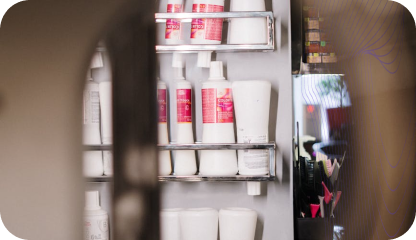
Equipment and Furniture
Purchase necessary items like styling chairs, shampoo stations, and workstations. Investing in high-quality equipment can improve service delivery and client satisfaction. Quality equipment is a long-term investment that enhances the salon’s functionality and appeal.
These beauty salon startup costs are critical to establishing a salon that is both functional and appealing to clients.

Salon Equipment and Furniture Costs
Essential equipment and furniture items for a beauty salon include:
-
Styling Chairs: $150-$500 each. These are essential for providing hair services and should be comfortable and adjustable.
-
Mirrors: $100-$300 each. Mirrors are crucial for styling and allow clients to see the results of their services.
-
Hairdryers and Styling Tools: $50-$200 each. These tools are necessary for hairstyling and should be reliable and durable.
- Shampoo Stations: $500-$1,000 each. These stations should be comfortable for clients and easy to use for staff.
Other equipment and furniture may include manicure and pedicure stations, facial beds, waxing stations, reception desks, waiting area furniture, and storage units. Investing in quality equipment can enhance the client experience and improve operational efficiency.
The costs associated with these items will vary, but investing in quality will ensure longevity and client satisfaction.
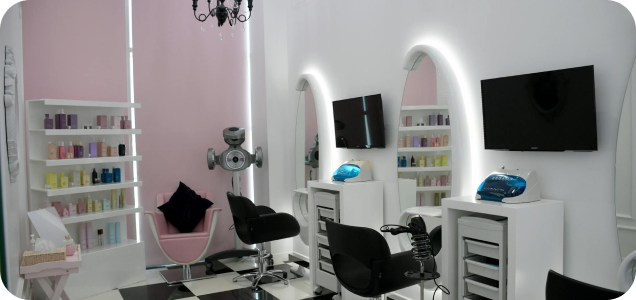
Lease and Renovation Costs
-
Monthly Rent: Varies widely based on location. Prime locations with high foot traffic typically have higher rent.
-
Security Deposit: Typically equivalent to one to three months’ rent.
-
Renovations: Costs for remodeling, interior design, and décor can range from $5,000 to $50,000. Renovations may include painting, flooring, plumbing, electrical work, and custom cabinetry.
Careful planning and budgeting for renovations can help create a functional and aesthetically pleasing salon space that attracts clients.

Licensing and Permit Fees
Obtaining the necessary licenses and permits involves several costs:
-
Business License: $50-$500, depending on your location.
-
Cosmetology License: $100-$300, depending on your state.
-
Health Permits: $50-$200. Health permits ensure your salon meets local health and safety standards.
Compliance with legal requirements is essential to operate your salon legally and avoid potential fines or shutdowns.

Marketing and Advertising Budget
-
Website Development: $500-$5,000. A professional website is essential for attracting clients and showcasing your services.
-
Social Media Campaigns: $100-$1,000 per month. Social media advertising can help reach a broader audience and generate leads.
-
Traditional Advertising: $200-$1,000 for local ads and promotional materials such as flyers, business cards, and banners.
These initial marketing efforts are crucial for building a brand presence and attracting your first clients.
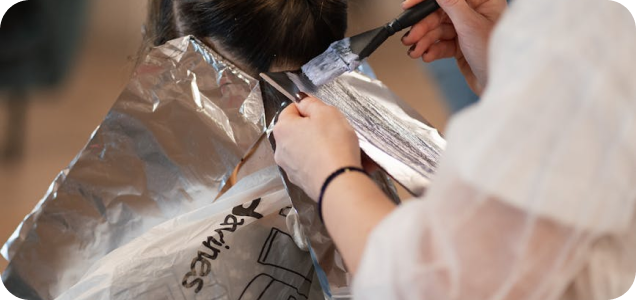
Hiring and Training Costs
Recruiting and training staff involves several costs:
-
Recruitment Costs: Advertising job openings and conducting interviews may cost a few hundred dollars.
-
Training Programs: Investing in professional development and ongoing education for staff can enhance service quality and client satisfaction. Training costs may include course fees, travel expenses, and materials.
A well-trained staff is crucial for delivering high-quality services and maintaining a positive reputation. Investing in your team ensures that your salon provides top-tier services from the outset.

Point of Sale (POS) System Costs
A POS system is essential for managing transactions, inventory, and client appointments. Costs include:
-
POS System Purchase: $500-$2,000, depending on the features and capabilities.
-
Maintenance Fees: 15-$50 per month for software updates, support, and maintenance.
Consider options like ME-POS, which offers POS systems for beauty salons, including appointment scheduling, inventory management, and sales reporting. An efficient POS system can streamline operations and improve client satisfaction. A reliable POS system is integral to smooth business operations and efficient service delivery.
Calculating Regular Operational Costs
In addition to the initial investment, operating a beauty salon involves ongoing expenses that must be managed to ensure profitability and sustainability. Understanding these costs is essential for effective financial planning.

Inventory and Supplies
Regular expenses for inventory include:
-
Beauty Products: $500-$2,000 per month for shampoos, conditioners, hair color, nail polish, skincare products, and other consumables.
-
Supplies: Towels, capes, cleaning supplies, gloves, and other essential items.
Managing inventory efficiently is crucial to avoid stockouts and overstocking, which can impact cash flow and service delivery. Regularly review inventory levels and adjust orders based on client demand and usage patterns. These recurring costs are necessary to maintain service quality and client satisfaction.

Utilities and Maintenance
Monthly costs for utilities and maintenance include:
-
Electricity and Water: $200-$500, depending on the size of your salon and the number of clients served. Efficient energy use can help manage these costs.
-
Internet: $50-$100. A reliable internet connection is essential for managing appointments, processing payments, and running marketing campaigns.
- Maintenance: Costs for equipment repairs and facility upkeep. Regular maintenance can prevent costly breakdowns and ensure a smooth operation.
Budgeting for utilities and maintenance ensures that your salon remains operational and in good condition, contributing to client satisfaction.

Employee Salaries and Benefits
Ongoing payroll expenses involve:
-
Salaries: $2,000-$5,000 per employee per month, depending on experience and expertise. Competitive salaries can help attract and retain skilled professionals.
-
Benefits: Health insurance, paid time off, retirement plans, and other compensation. Offering benefits can enhance job satisfaction and loyalty among staff.
Managing payroll efficiently is crucial for maintaining a motivated and productive workforce. Ensuring competitive compensation and benefits is key to retaining a high-quality team.

Marketing and Promotions
Continued marketing efforts require a budget for:
-
Social Media Management: $100-$500 per month for content creation, advertising, and engagement. Regular social media activity helps maintain client interest and attract new clients.
-
Local Promotions: Sponsorships, events, and community engagement activities. Participating in local events and partnering with other businesses can increase visibility and attract new clients.
Investing in ongoing marketing efforts can help maintain client interest and encourage repeat business, contributing to sustained growth and profitability. Consistent marketing efforts are essential to keeping your salon top-of-mind for both current and potential clients.
Conclusion








The initial investment for opening a beauty salon can vary widely, typically ranging from $20,000 to $100,000, depending on location, size, and level of customization. This includes costs for rent, renovations, equipment, furniture, licenses, permits, marketing, and initial inventory. Ongoing operational costs such as utilities, maintenance, employee salaries, benefits, inventory replenishment, and continued marketing efforts must also be factored into the budget.
By understanding these steps to open a beauty salon and the associated costs, aspiring salon owners can create a thriving business that attracts and retains satisfied clients. Proper planning and budgeting are essential for the long-term success and sustainability of your beauty salon. With dedication, strategic planning, and a commitment to excellence, opening a beauty salon can be a rewarding and profitable venture.
View more
Related Articles
View more









